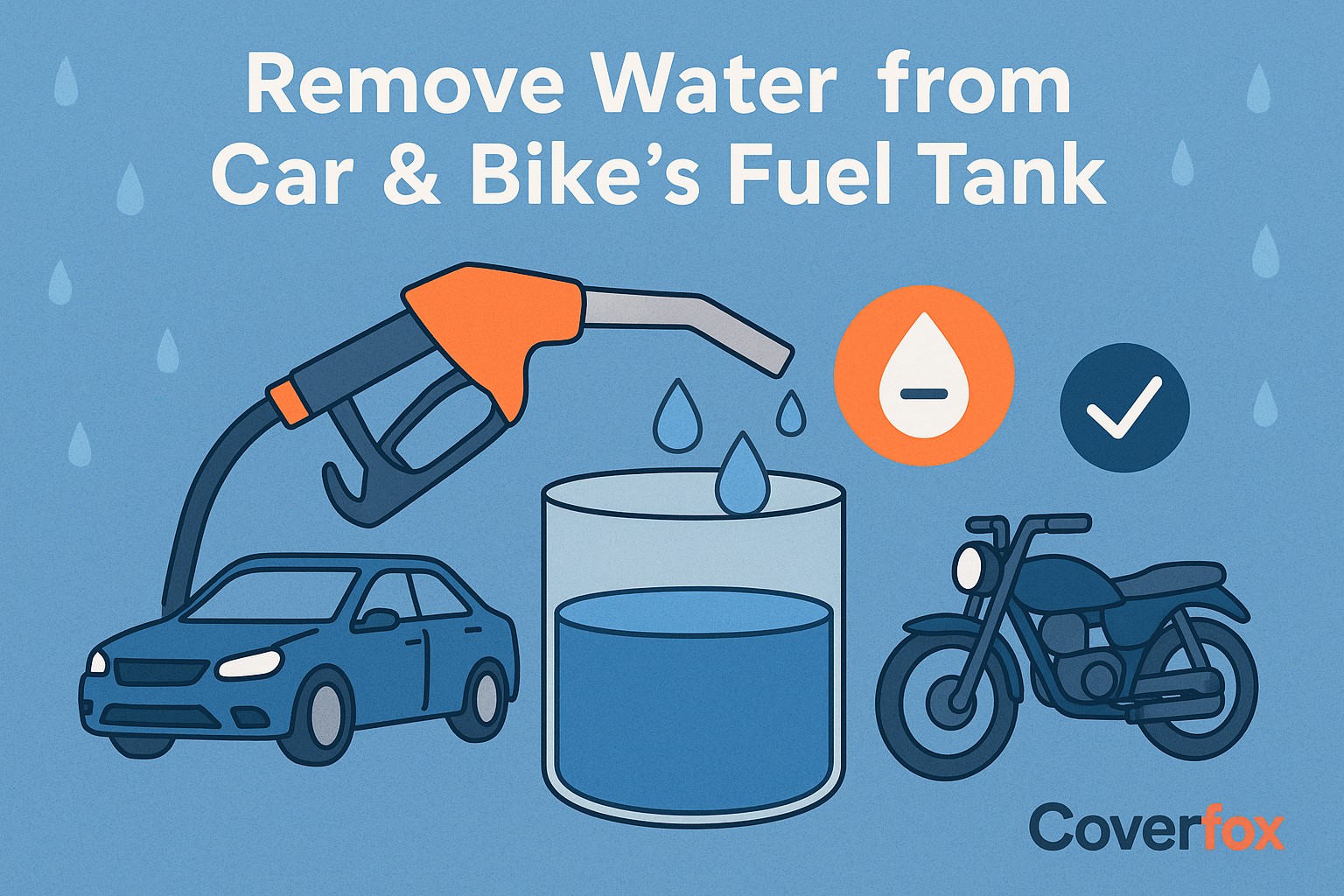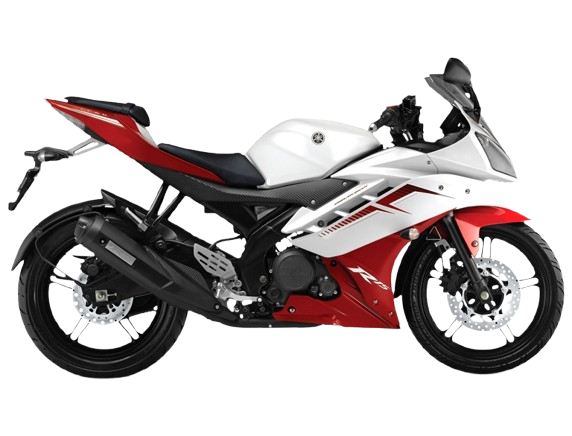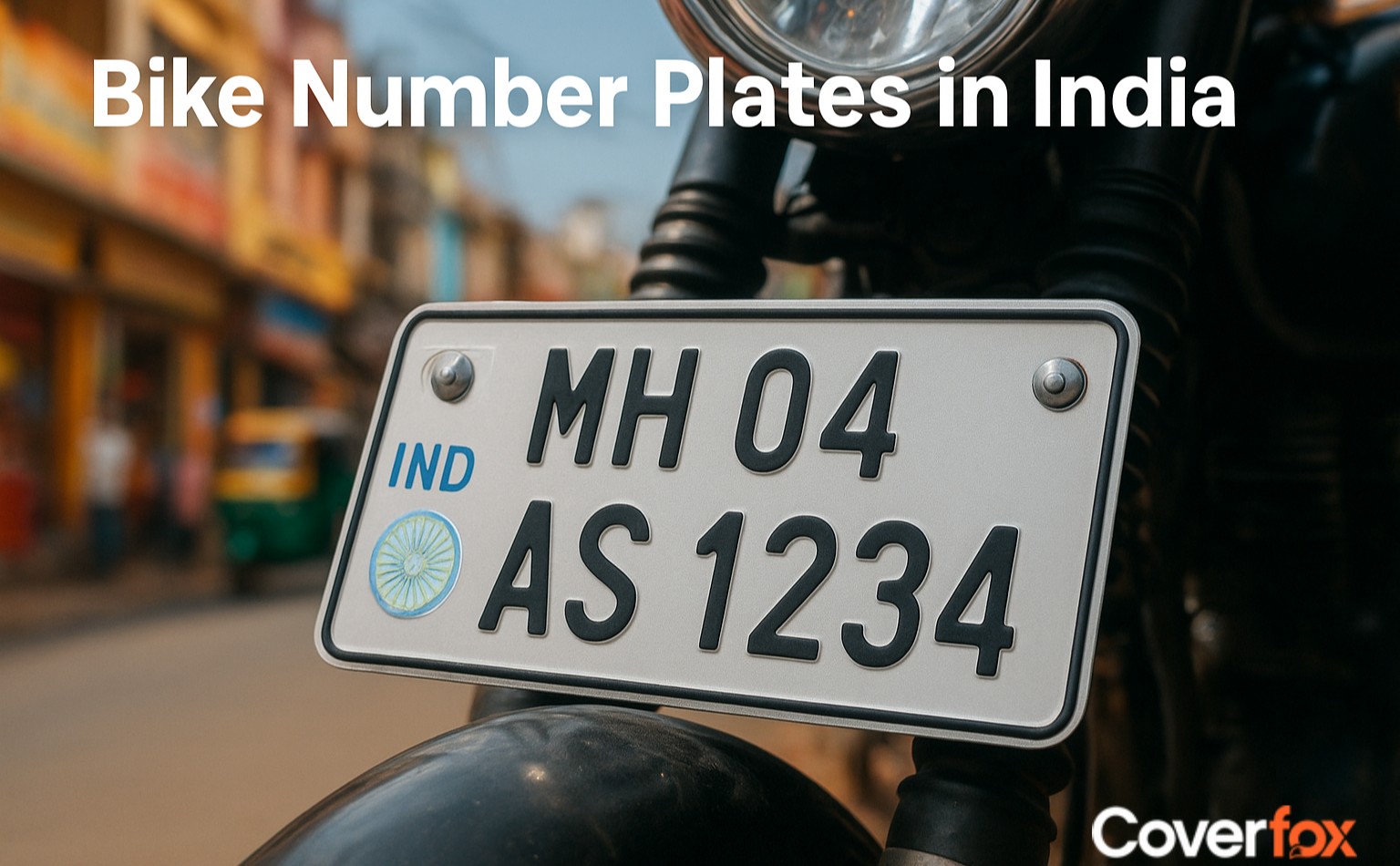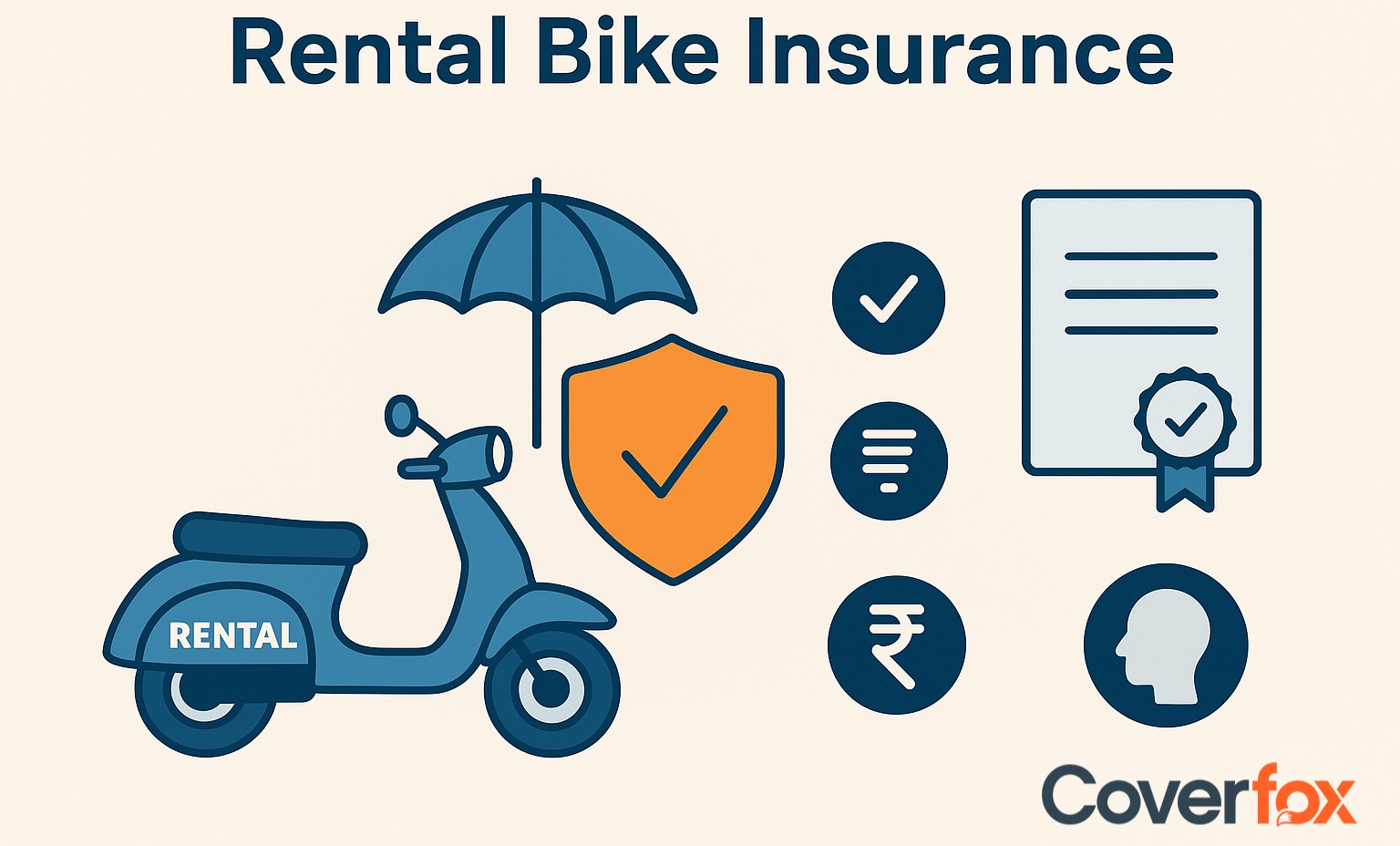Noticing your car/bike mileage has been reduced lately, or your car is letting out an excess of steam? These are likely signs of water in your vehicle’s fuel tank.

This is a common occurrence during monsoon for obvious reasons, but other than that, there are reasons beyond our control where water sips into the fuel tank. Water in the fuel tank is harmful to your car or bike; it can damage your engine and rust your fuel tank. But you can avoid it or solve it using simple and easy procedures, which you can learn through this article.
How Does Water Get Into the Fuel Tank?
While water should not typically enter the fuel tank, it can get its way through sometimes. Here’s how:
Condensation
Contaminated Fuel
Faulty Fuel Cap or Seal
Flooding or Submersion
Human Error
Moisture in the air inside a partially filled tank condenses on the tank walls, especially in humid or rainy weather.
Refuelling from stations with poor fuel storage or water-contaminated underground tanks introduces water directly into your fuel system.
A cracked, loose, or missing fuel cap allows rainwater or humidity to seep into the tank over time.
Driving through flooded roads or deep water can force water into the tank via the fuel cap or vent system if they aren’t fully sealed.
Accidental spillage of water during washing, cleaning, or improper storage of fuel containers can lead to tank contamination.
How to Check for Water in Your Car/Bike Fuel Tank
If you detect or feel that there is water inside your vehicle’s fuel tank, you can check that by using any of the following methods:
Use a Transparent Container to Inspect Fuel
Check Fuel Colour and Clarity
Smell the Fuel
Dip a Water Detection Paste
Inspect the Fuel Filter or Water Separator (if equipped)
Use Fuel Test Strips
Look for Rusting at the Bottom of the Fuel Tank
Drain a small amount of fuel into a clear container, and water will separate and settle at the bottom due to its higher density.
Good fuel is usually clear and amber in colour. Cloudiness, layers, or floating particles may indicate water contamination.
Water-contaminated fuel may have a sharp or unusual odour compared to the typical petrol or diesel smell.
Apply water-detection paste on a dipstick and insert it into the tank. If the paste changes colour, water is present.
Some vehicles have filters or separators that trap water. Remove and check for water at the bottom.
These chemically treated strips can detect water content when dipped into the fuel tank or container.
Water can lead to rusting of the fuel tank. Inspect the fuel tank for any microbes and check for rusting.
Signs of Water Contamination in Fuel
How to determine whether the fuel is contaminated with water or not? Here are the signs that will indicate water contamination inside the fuel tank of your vehicle:
Engine Misfiring or Hesitation
Rough Idling or Poor Acceleration
Unusual Exhaust Smoke
Check the Fuel Filter or the Drain Plug
Dashboard Warning Lights
If the engine hesitates, misfires, or stalls, especially right after refuelling, water contamination may be the cause.
Water in fuel disrupts combustion, causing rough engine idling, sluggish performance, or jerky acceleration.
White or excessive smoke from the exhaust may indicate that water is mixing with the fuel during combustion.
For bikes and some cars, inspect the fuel filter or open the fuel tank drain (if present); cloudy or layered fuel is a clear sign of water.
In modern vehicles, sensors may detect issues and trigger engine warning lights related to fuel system irregularities.
Problems Caused by Water in Your Car/Bike Fuel Tank
Here’s how water in your fuel tank can damage your car or bike:
Reduced Fuel Efficiency
Rust and Corrosion
Fuel Injector Damage
Difficulty Starting the Engine
Check Engine Light Activation
Long-term Engine Damage
The engine burns less efficiently with contaminated fuel, resulting in poor mileage and higher fuel consumption.
Water inside the tank or fuel lines can lead to internal rusting, damaging metal components over time.
Water can clog or corrode fuel injectors, affecting spray patterns and causing uneven engine performance.
The presence of water prevents proper ignition, making it harder to start the vehicle, especially in colder weather.
Water affects fuel sensors and combustion quality, triggering error codes or dashboard warning lights.
Persistent water contamination can lead to piston damage, valve issues, or failure of major engine components.
How to Remove Water from Your Car/Bike Fuel Tank
To remove water from your car or bike’s fuel tank, you can follow these simple yet effective procedures:
Drain the Fuel Tank Completely
Use Isopropyl Alcohol Fuel Additives
Replace the Fuel Filter
Vacuum or Compressed Air Drying
Refill with Clean Fuel and Observe
Remove all contaminated fuel using a siphon pump or drain bolt to eliminate water.
Add fuel additives that bind with water and allow it to burn off safely during combustion.
Swap out the fuel filter to prevent residual water from affecting engine performance.
Use a vacuum pump or compressed air to remove moisture from the tank after draining.
After treatment, refill with fresh fuel and monitor engine performance for any irregularities.
Preventing Water Contamination in the Future
Once you drain out the water from the fuel tank, it is important to ensure that water does not enter the fuel tank again in the future. To do that, you can:
Keep the Fuel Tank Full
Refuel from Trusted Petrol Stations
Ensure the Fuel Cap is Properly Sealed
Inspect and Maintain the Fuel Tank Regularly
Park in Covered or Dry Areas
Reduces air space and prevents condensation buildup inside the tank.
Choose clean, reputable fuel stations to avoid water-contaminated fuel.
Always check for a tight, undamaged fuel cap to block rainwater or moisture entry.
Periodic checks help detect rust, leaks, or early signs of water contamination.
Minimises exposure to moisture and rainwater that can affect the tank seal.
Summing Up
Ensure you have car insurance and bike insurance policies to protect your car from heavy damage. Water can easily damage your vehicle’s engine if left untreated for a long time, and is not covered by motor insurance unless mentioned in the policy, or you have engine protection cover. Having the add-on Engine Protection Cover ensures your car or bike’s engine is insured, especially during the rains. Remove any water content in the fuel tank to avoid rust and difficulty in engine combustion using the tips in this article, and ensure that water does not seep back into the fuel tank in the future again.
Related Articles
Frequently Asked Questions
How to remove water in a fuel tank?
Drain the tank completely, replace the fuel filter, and use fuel additives to eliminate residual moisture.
How can I tell if there is water in the fuel tank of my vehicle?
Look for signs like rough idling, misfires, poor acceleration, or check the fuel's appearance and smell.
What can happen if water enters the fuel tank?
It can disrupt combustion, cause engine stalling, damage fuel components, and reduce overall performance.
What are the effects of water contamination in the fuel tank?
Water leads to corrosion, injector issues, poor mileage, and long-term engine wear if not addressed.
How much water in the fuel tank is considered problematic?
Even a small amount (a few ml) can affect engine performance, especially in bikes and smaller vehicles.
What are the preventive measures to avoid water in the fuel tank?
Keep the tank full, use trusted fuel stations, check the fuel cap seal, and avoid refuelling during rain.
Is water damage in the fuel tank covered by insurance?
Usually not, unless it’s part of flood damage and specifically covered under your comprehensive policy.
Does water contamination impact long-term engine performance?
Yes, prolonged contamination can lead to rust, component failure, and irreversible engine damage.






